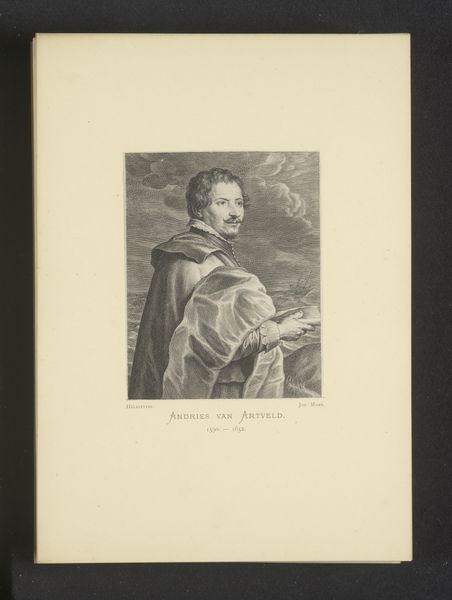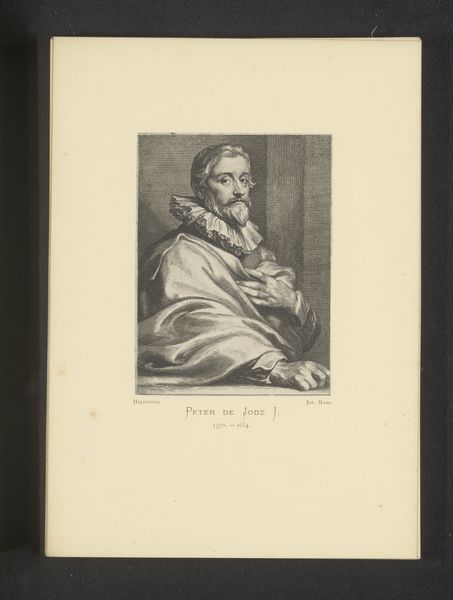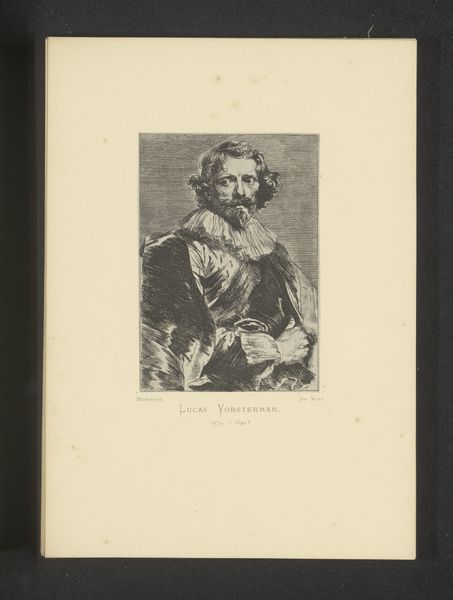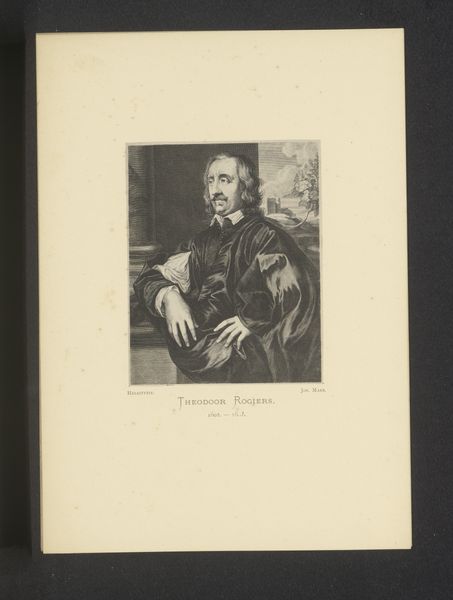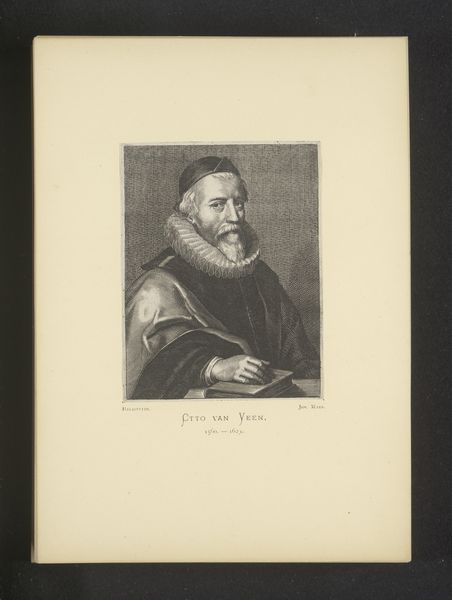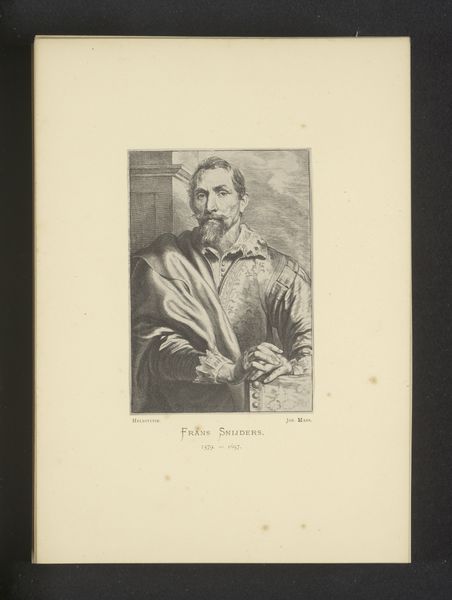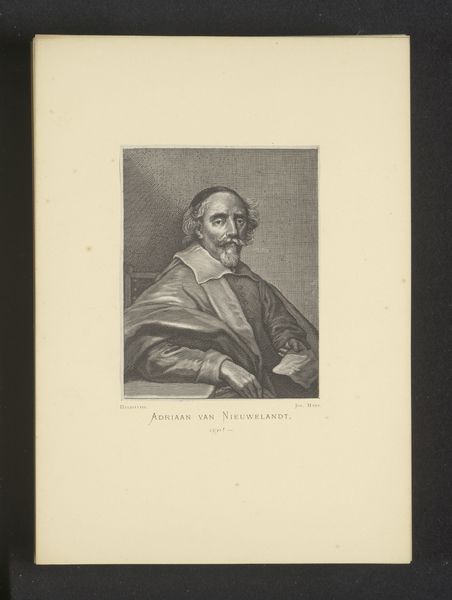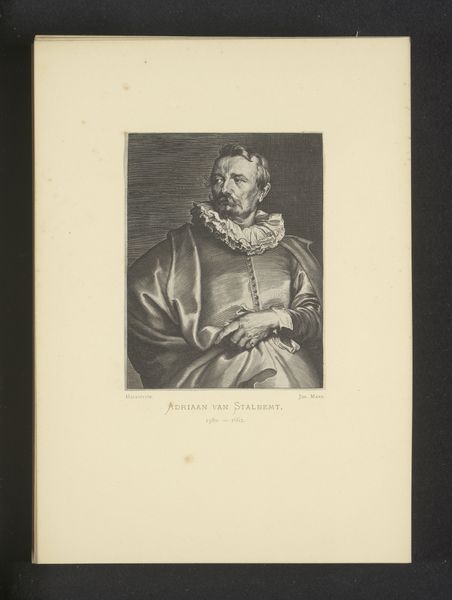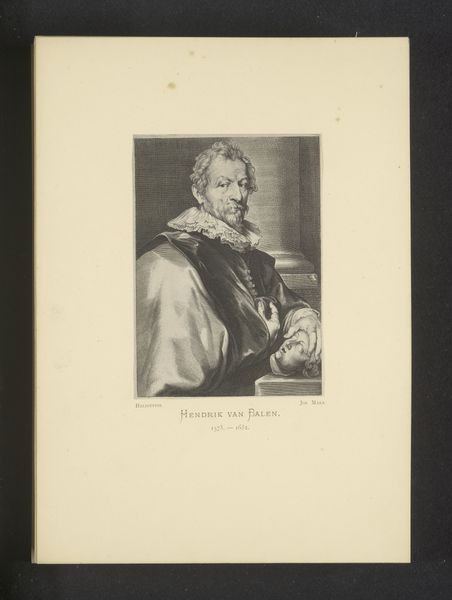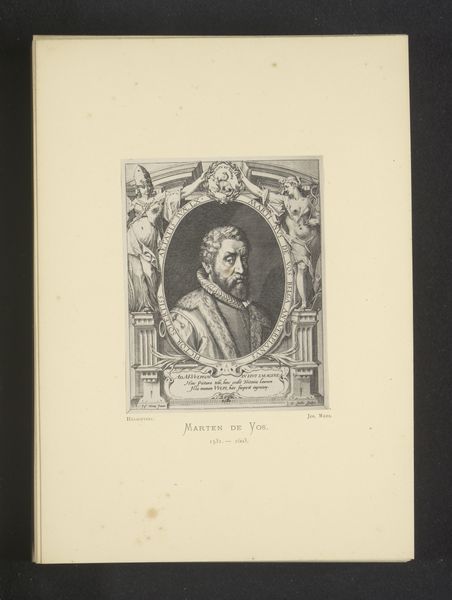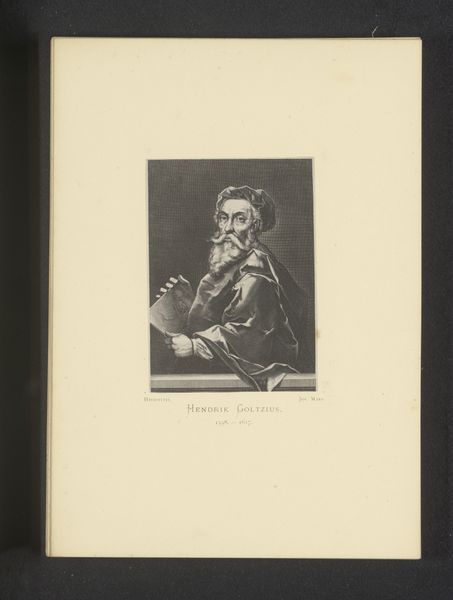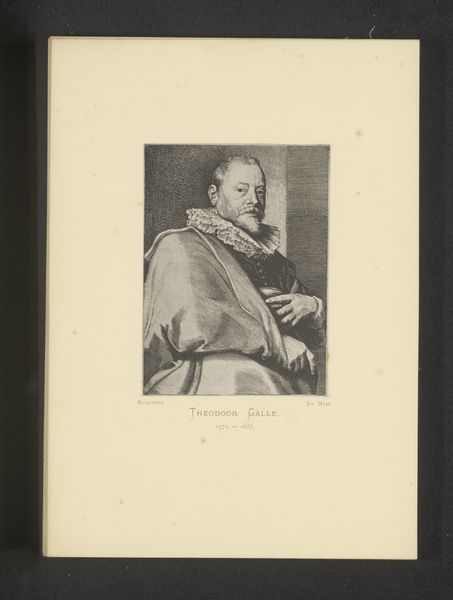
Reproductie van een gravure van een portret van Aegidius Sadeler door Pieter de Jode (II) before 1877
0:00
0:00
Dimensions: height 111 mm, width 90 mm
Copyright: Rijks Museum: Open Domain
Editor: So, here we have a reproduction of an engraving of Aegidius Sadeler, created before 1877, by Pieter de Jode the Younger. It’s a pretty classic-looking Baroque portrait. What jumps out at you when you look at this print? Curator: The immediate draw is to understand the labour involved. This isn’t a spontaneous painting; it’s a reproduced engraving. Consider the artisanal skill in translating the original portrait - probably a painting - into a graphic form for mass production, even though 'mass' in this context meant a limited number. How does that mediation shift the value and meaning of the portrait? Editor: That’s a really interesting point. So, it’s not just about depicting the person, but also about the process of making the image accessible to a wider audience? Curator: Precisely. Look at the sharp lines created. The burin, which cut the plate, becomes a crucial element, as does the quality of the paper. Consider, too, who could afford such a print? These objects were still luxuries. In this context, the very *reproduction* reinforces notions of class and social standing, echoing those enjoyed by the sitter in the first place. How do the materials themselves—the ink, the paper—speak to these considerations? Editor: So, even a 'reproduction' tells us a lot about the systems of value and consumption in its time. I guess I was just seeing it as a portrait! Curator: Exactly. And what does the *act* of collecting these portraits signify? The status imbued by possessing imagery. Also the circulation of knowledge itself. Seeing art through the lens of its material production and consumption can be quite revealing, can't it? Editor: Definitely. It really shifts how I see art, away from just the image and more toward its life as an object within a society. Thanks for opening my eyes! Curator: My pleasure. Hopefully you'll continue thinking critically about what labor produces art.
Comments
No comments
Be the first to comment and join the conversation on the ultimate creative platform.

